“Sketch everything, and keep your curiosity fresh.” – John Singer Sargent
“The more I paint, the more I like everything.” – Jean-Michel Basquiat
As do you, I love to paint. I love nature, the experience of being outdoors. And I love many of the things I see around me, from morning to night: the sky, the light, clouds, people, water, plants, the city. And then I travel and see more new things. So I want to paint them all! I usually find my easel set up in front of a landscape, but not always. There are just so many things to see, to enjoy—life will not be long enough for me to paint all of my ideas!
But wait a second: before I get trigger-happy, perhaps I should consider the advice of those more seasoned than myself when it comes to selecting subject matter to paint. Let’s see: “Paint only in series, to explore a subject thoroughly.” “You don’t want any failures—only paint what you’re good at.” “Build your brand by painting one thing, so your collectors will know what to expect from you, and buy that.” “Practice so you can build a formula for making a quality product—that way you’ll know exactly what to do every time you come to the easel.”
There’s some wisdom in those words, for those who appreciate routine, want to avoid making mistakes, are satisfied with their current work and don’t have the need to try anything new. After all, the choice of subject matter is personal, and one could reason—just as in the case of a musician—that the choice of “the wrong song” could end tragically.
I’ve painted the landscape most of my life. It’s not that that subject is part of my “brand”, really. And the subject is so vast that I will never be able to paint it just the way I intend during each and every session.
I must say here that I’m not creating a product, though, but original art. If I’m going to spend my life painting, then I’d like my paintings to mean something. And in each of those paintings, I would like there to be more going on than just a rendition of an object, or several objects. How about mood, or emotion, the particular way light plays on a surface, or simply the creation of a striking design? Pierre Bonnard held that, in any painting, “The principal subject is the surface, which has its color and laws over and above those of object.” Edward Hopper left us word that all he “ wanted to do was paint sunlight on the side of a house.” In setting my own course in choosing exactly what to paint, I am beginning to believe that, as Theresa Bayer puts it, “The subject is a means to an end, the end being excellence in artistry.”
When I look at the work of other artists, I am always intrigued not only by what they paint but how they paint it. It appears that Richard Diebenkorn was curious in that way, too, when he said, “One wants to see the artifice of the thing as well as the subject.” Contemporary artist John Burton echoes the counsel of J.S. Sargent above when he advises the artist to “Draw everything, so you’ll be afraid of nothing.”
You might have seen some of John’s unusual concept pieces and world-building paintings that he has created, along with Bryan Mark Taylor’s ideas along those same lines. Both artists produce wonderfully large landscape paintings as well. But it is not so much their subjects that attract, or is the hallmark of their work: it is the years of perfecting their craft that comes through, be it a painting of a space vehicle, or a pinnacle in the wilderness. It’s that confidence from the daily solving of painting problems both technically and intelligently that we see in their works, no matter the subject. Jim McVicker is another versatile master- artist who comes to mind, and who also paints a variety of subjects: boats, portraits, figures, cityscapes, still lifes, et al. He isn’t afraid to try a new subject because well, he’s just not afraid to try it. As Jim has said, “There are a lot of things you could be afraid of in this life, but painting is not one of them.”
When you come to think of it, creating a painting is not a life-and-death matter, on the level of a surgeon operating on a heart, or a weapons specialist defusing a bomb (although I know that I have at times approached blank canvases in this manner). I want to be free within my own mind to try new things, to discover more of the world and why it appears the way that it does. And I also desire to improve my artistry, by expanding my repertoire.
This year I have intentionally done four things in my work as an artist that I have done very little of in the past. I went to New York so I could paint some cityscapes. I returned to watercolor painting as an “adjunct medium” and joined the National Watercolor Society for an upcoming show. I created three large-scale acrylic paintings, the largest I have ever done. And this month I took a still-life painting workshop with the still-life master, Jim McVicker. I am believing that these forays outside my Main Line will have cognitive, instinctive, and technical impacts across my body of work.
Bottom line: when we choose a subject to begin a painting, there are at least two levels of reality operating. One is the physical subject of the painting that we see (the Model). The other reality is the Design that we feel and create from that subject. In Art, of course, the Design is superior to the Model. No need to have anxiety about trying a new model, if you can design it the way you wish. At the very least, we could gain information or develop a renewed confidence that could be applied to our larger body of work.
So let’s go—it’s time to try something new!
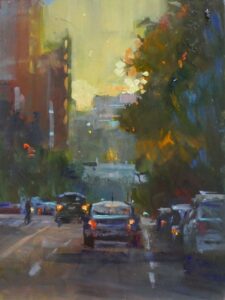
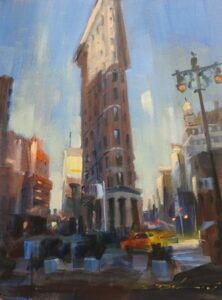
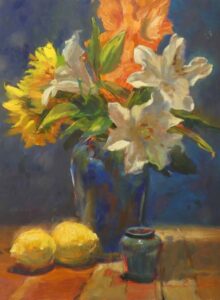
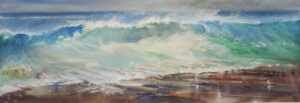
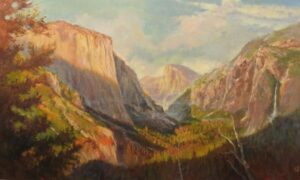
Leave a Reply